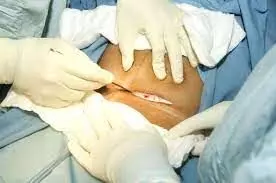Smaller interpregnancy interval linked to uterine rupture risk during labour after cesarean: Study

Smaller interpregnancy interval linked to uterine rupture risk during labor after cesarean suggests a new study published in the American Journal of Obestretics and Gynecology.
A study was done to describe the association between inter-pregnancy interval (IPI) and uterine rupture among individuals attempting TOLAC. This retrospective cohort study used US CDC data including birth and fetal death data files (2011-2021) and Period/Cohort Linked Birth-Infant Death Data Files (2014-2019). Participants had one previous livebirth by cesarean delivery (CD), no previous vaginal births and an immediately subsequent TOLAC. Rates of uterine rupture were described by IPI group and univariable logistic regression with first-order splines with one knot. Multiple imputation and multivariable logistic regression were used. Results: Among 42.5 million births, 506 666 TOLACs immediately after a CD were included in the multivariable logistic regression.The raw rate of uterine rupture was 0.40% for IPIs < 18 months (95%CI 0.37-0.44%) and 0.30% for IPIs ≥18 months (95%CI 0.28-0.32%). The Figure shows rates of uterine rupture by IPI and the predicted probabilities of rupture in the univariable spline regression for induced/augmented and spontaneous labors. There was a linear decrease with increasing IPI until 18 months and subsequent relatively constant rates. The odds ratio was 1.94 for an IPI < 3 months (95%CI 1.73 to 2.06), progressively decreasing to 1.15 for an IPI from 15 to < 18 months (95%CI 1.10 to 1.21) compared with IPI 4-5 years after adjusting for confounders. Uterine rupture was associated with increasing age, decreasing height, higher gestation, higher birthweight, and induced/augmented labors. It was not associated with hypertension, gestational diabetes or smoking. The rate of uterine rupture with stillbirth or neonatal death was 0.012% (1:8413) for IPI < 18 months (95%CI 0.00-0.02%) and 0.018% (1:5614) for IPI ≥18 months (95%CI 0.01-0.02%). Shorter IPI is strongly associated with an increase in uterine rupture in TOLAC with the odds ratio falling sharply between 0 and 18 months. An IPI of at least 18 months should be recommended to achieve the lowest incidence of uterine rupture during TOLAC.
Reference:
Bradley de Vries, Pejman Adily, Travis Bettison, Rajit Narayan, George Johnson, Marjan Mosalman Haghighi. 57 Inter-pregnancy interval and uterine rupture among more than 500,000 Trials of Labor after Cesarean (TOLAC). ORAL CONCURRENT SESSION 6 - QUALITY, EQUITY & PUBLIC HEALTH | WEDNESDAY, FEBRUARY 14 | 10:00 AM - 12:00 PM| VOLUME 230, ISSUE 1, SUPPLEMENT. American Journal of Obestretics and Gynecology. DOI:https://doi.org/10.1016/j.ajog.2023.11.078
Keywords:
Smaller interpregnancy interval, uterine rupture, risk, labor, cesarean, Bradley de Vries, Pejman Adily, Travis Bettison, Rajit Narayan, George Johnson, Marjan Mosalman Haghighi, American Journal of Obestretics and Gynecology
from Medical News, Health News Latest, Medical News Today - Medical Dialogues | https://ift.tt/3LXpGbf
Comments
Post a Comment